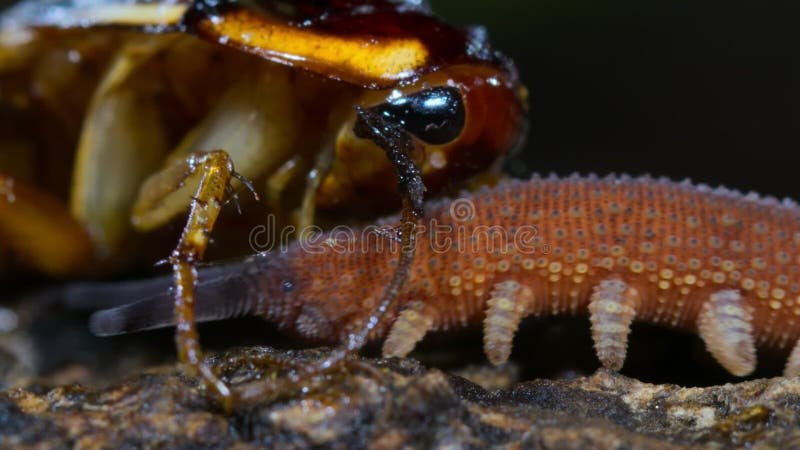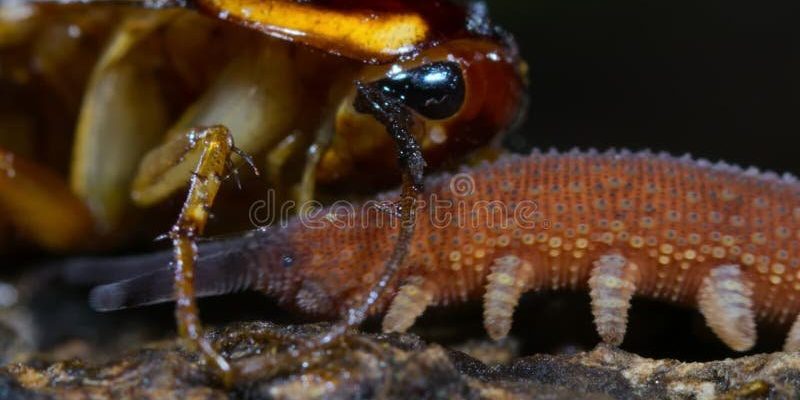
Feeding velvet worms isn’t just about tossing in some random insects; it’s more of a thoughtful process. Think of it like cooking dinner for a picky friend—you want to choose the right ingredients that they’ll actually enjoy. Velvet worms typically feast on small invertebrates, and their diet in captivity should mimic what they’d naturally hunt in the wild. So, whether you’re a new keeper or a seasoned enthusiast, getting their diet right is key to keeping your velvet worms healthy and vibrant.
Understanding Velvet Worms’ Diet in the Wild
Velvet worms (or *Onychophorans*) are unique creatures that inhabit humid forests, often hiding under leaf litter or inside rotting wood. In their natural habitat, they primarily feed on soft-bodied prey like insects, snails, and other small invertebrates. Imagine living in a world where you had to sneak up on your food using a combination of patience and some sticky slime! That’s exactly how these little guys operate.
Their hunting method isn’t just cool; it’s efficient. Velvet worms climb onto their prey and inject a sticky substance that immobilizes it, making it easy to consume. So, when you’re choosing food for your captive velvet worms, you want to replicate that experience as closely as possible. It’s important to select prey that’s small enough for them to subdue easily, considering their hunting style.
Safe Prey Options for Feeding Velvet Worms
Now that we’ve touched on their natural diet, let’s get into the fun part—what to actually feed your velvet worms. Here are some safe and nutritious options:
- Fruit Flies: These tiny insects are perfect for young velvet worms. You can buy them in cultures, and they’re easy to manage.
- Springtails: Another excellent option! These little critters are often found in moist environments and are a favorite snack.
- Small Crickets: Adult velvet worms can tackle small crickets, which provide great protein.
- Waxworms: Soft-bodied and easy to digest, these larvae are quite popular. Just make sure you don’t overdo it.
- Small Moths: If you have access to small moths, your velvet worms will appreciate the occasional treat.
It’s important to keep portions manageable. Velvet worms don’t need massive meals—think of it more like snacks throughout the week. Feeding them in small quantities allows them to digest properly, reducing the risk of health issues.
How to Prepare Prey for Velvet Worms
Feeding velvet worms isn’t just about finding the right prey; you also need to prepare it correctly. Here’s how you can make sure their meals are ready to go:
1. Size Matters: Ensure that the prey is small enough for your velvet worms to handle. If it’s too big, they might struggle, which can be stressful for them.
2. Use a Feeding Dish: Place the prey in a shallow dish to contain it. This way, your velvet worms can hunt without getting overwhelmed or stressed by a lot of roaming prey.
3. Avoid Pesticides: If you’re sourcing insects from outside, make sure they’re free from pesticides or chemicals. Animals can be sensitive to these substances, and you wouldn’t want to harm your pets.
By preparing the food correctly, you’re creating a more natural hunting experience for your velvet worms, which can be fun to watch and beneficial for their health.
Feeding Frequency: How Often Should You Feed?
When it comes to how often you should feed your velvet worms, the answer isn’t one-size-fits-all. It really depends on their age, size, and activity level. Here’s a general guideline:
– Juvenile Velvet Worms: These little ones should be fed more frequently, perhaps every two to three days. They’re growing and need the energy!
– Adult Velvet Worms: Adult worms can be fed once every 5 to 7 days. They can go a bit longer between meals, but you want to keep an eye on their weight and activity.
It’s crucial to observe your velvet worms post-meal. If they’re regularly leaving food behind or looking lethargic, it might be time to adjust their feeding schedule or prey size.
Common Mistakes to Avoid When Feeding Velvet Worms
Just like in any pet care routine, there are a few common pitfalls to steer clear of. Here are the mistakes you don’t want to make:
- Overfeeding: It can be tempting to give them lots of food, but overfeeding can lead to health issues. Stick to a reasonable portion.
- Ignoring Hygiene: Be sure to clean out any uneaten prey after a few hours. Rotting food can cause bacteria to grow, which isn’t good for your velvet worms.
- Feeding Inappropriate Prey: Not all insects are suitable for velvet worms. Avoid larger, hard-bodied insects that they can’t handle. It’s like trying to swallow a watermelon whole.
By avoiding these mistakes, you’ll keep your velvet worms happy and healthy, and you’ll enjoy watching them thrive.
Feeding velvet worms in captivity can be a rewarding experience when you understand their needs and preferences. From understanding their natural diet to choosing the right prey, each step plays a vital role in their health. Remember to keep things clean, provide the right portions, and take your time with their meals.
Caring for these unique creatures requires a little knowledge and a lot of heart. With the right approach, your velvet worms can live a happy and healthy life right in your home. So, go ahead and treat them well—after all, they deserve a feast fit for the fascinating critters they are!

